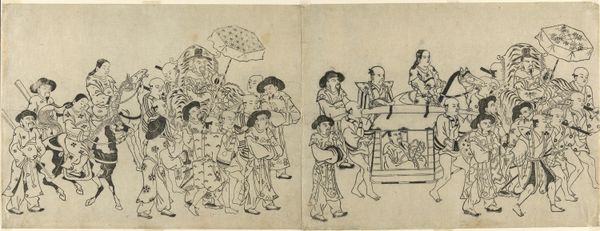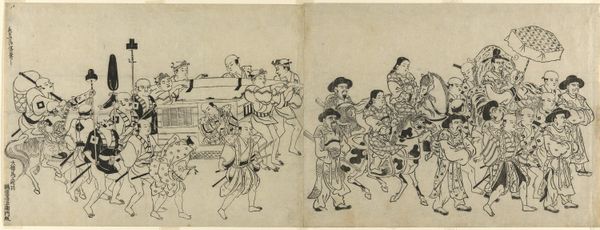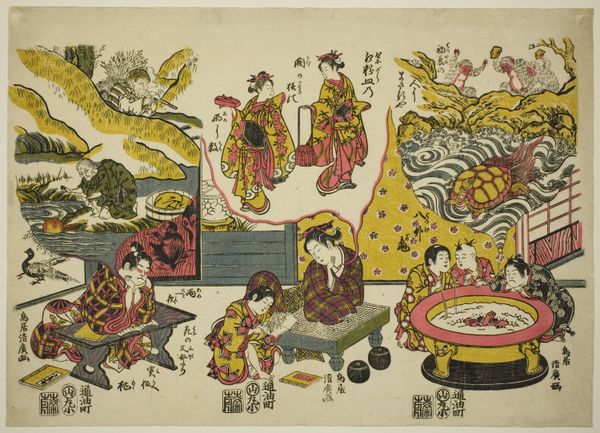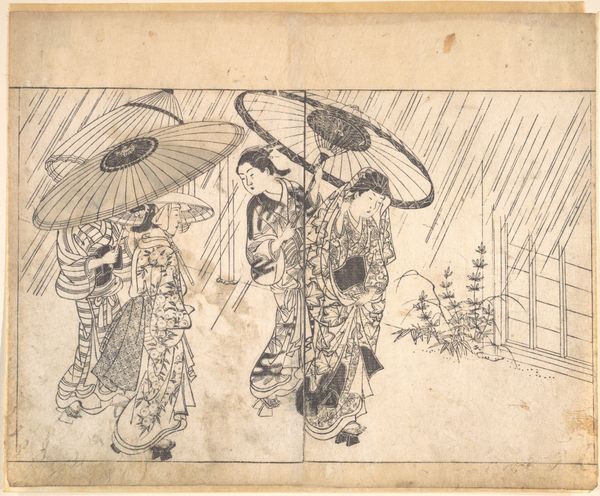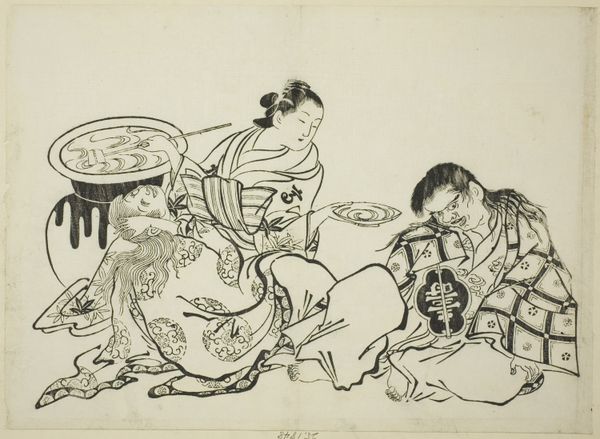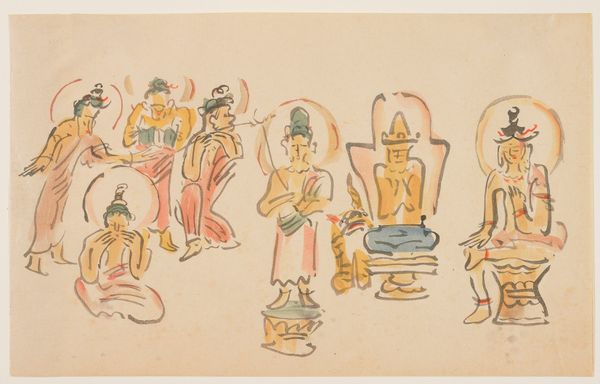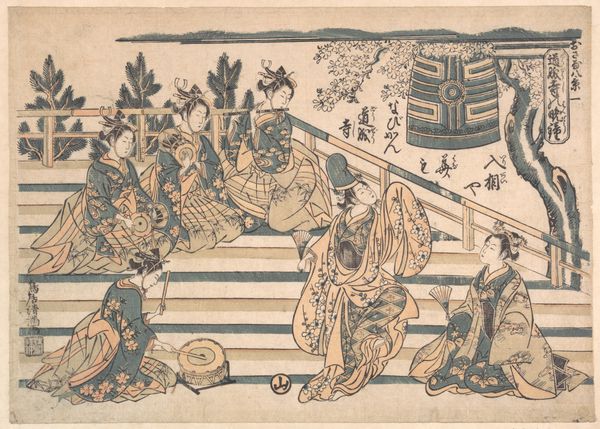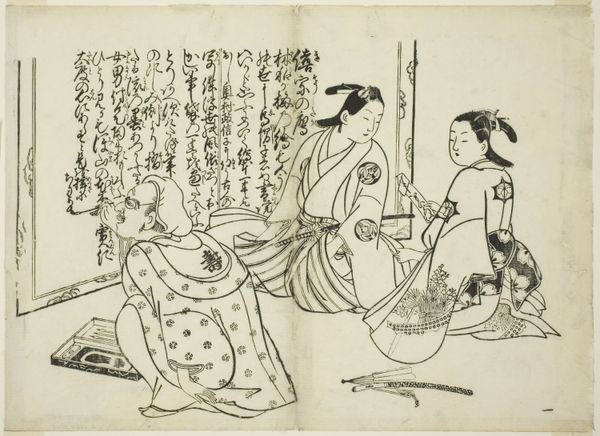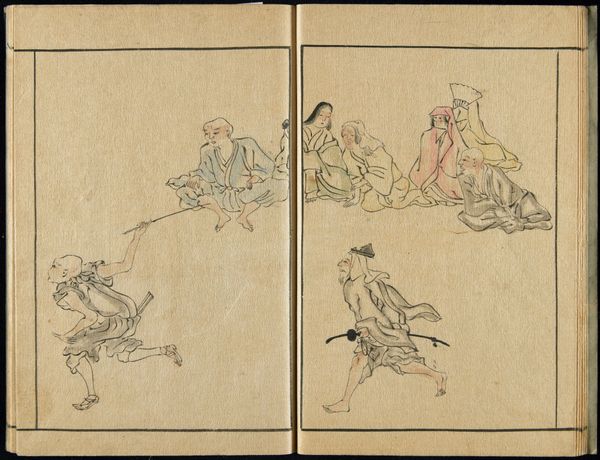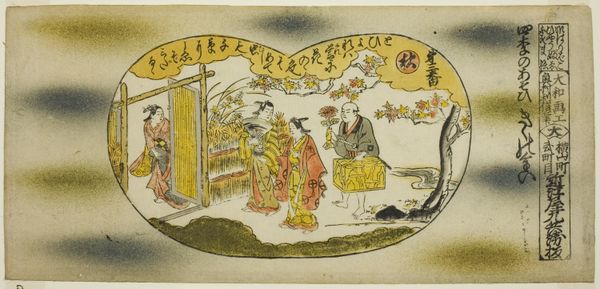
print, woodcut
# print
#
asian-art
#
ukiyo-e
#
woodcut
Dimensions: Each sheet 10 1/4 × 14 1/2 in.
Copyright: Public Domain
Curator: What a delightful print! Masanobu Okumura's "Parade of the Puppets," dating back to about 1700, is just brimming with details. It’s currently housed here at the Art Institute of Chicago. Editor: It strikes me as strangely processional and yet light-hearted. The muted palette, combined with the parade of figures, conveys a certain solemnity, undercut by the charming details of the puppets themselves. What is this event? Curator: It appears to represent a festival or procession, potentially one celebrating a deity, evident from the central figures carried on a palanquin. You will notice, upon closer inspection, the figures in the palanquin aren't human; they seem to be puppets or figurines. Editor: Indeed! The structural composition leads our eyes from the attendants and parasol bearers at the front to that central litter. It seems less about portraying individual emotion and more about the collective movement, that feeling of spectacle, doesn't it? What significance did such processions hold at that time? Curator: Precisely! Such parades were not simply entertainments but were integral social and religious events. The 'floating world', the Ukiyo-e culture in which this print emerged, really highlights the importance of rituals in everyday life and their significance to the community. This artwork freezes that sense of communal activity and the social function of these images is essential to observe. Editor: Interesting. What's especially engaging about this particular example are the spatial ambiguities. There's a shallow depth of field, almost flattened, yet the composition somehow remains legible, quite dynamic. Curator: That spatial tension speaks to the stylistic features popular in Japanese woodblock printing and demonstrates how it differs significantly from painting styles in Western traditions. The choice to compress the depth amplifies the sense of rhythm and progression, emphasizing movement in time and space. It's brilliant. Editor: Well, examining this piece through its form and composition certainly unlocks new meanings, just as viewing it through the lens of social practice gives context to these interesting representations. Thank you for your insights! Curator: The pleasure was mine. Examining these beautiful works always yields interesting results.
Comments
No comments
Be the first to comment and join the conversation on the ultimate creative platform.
